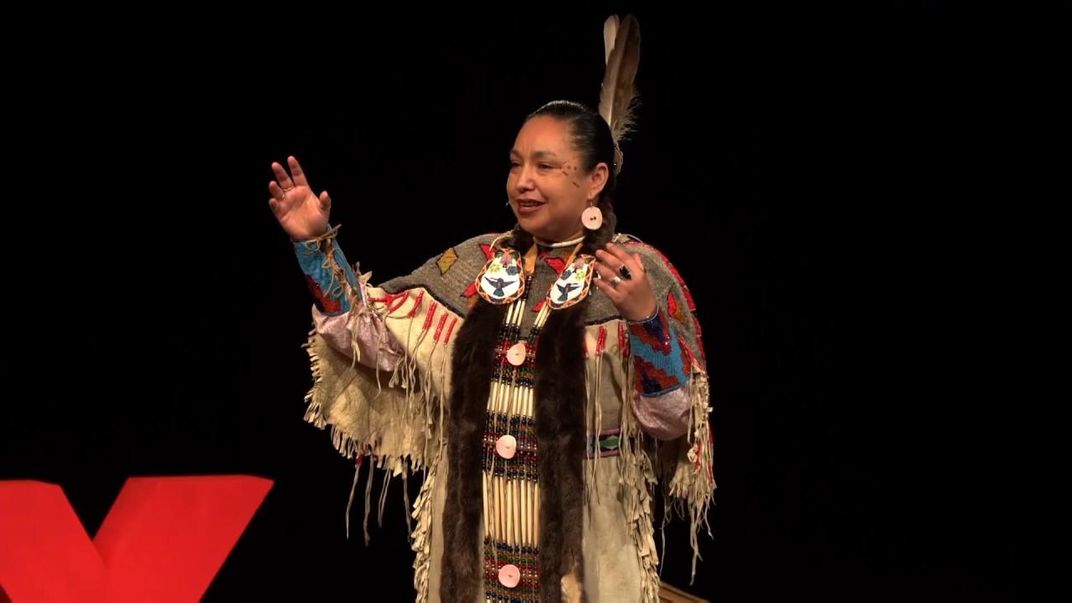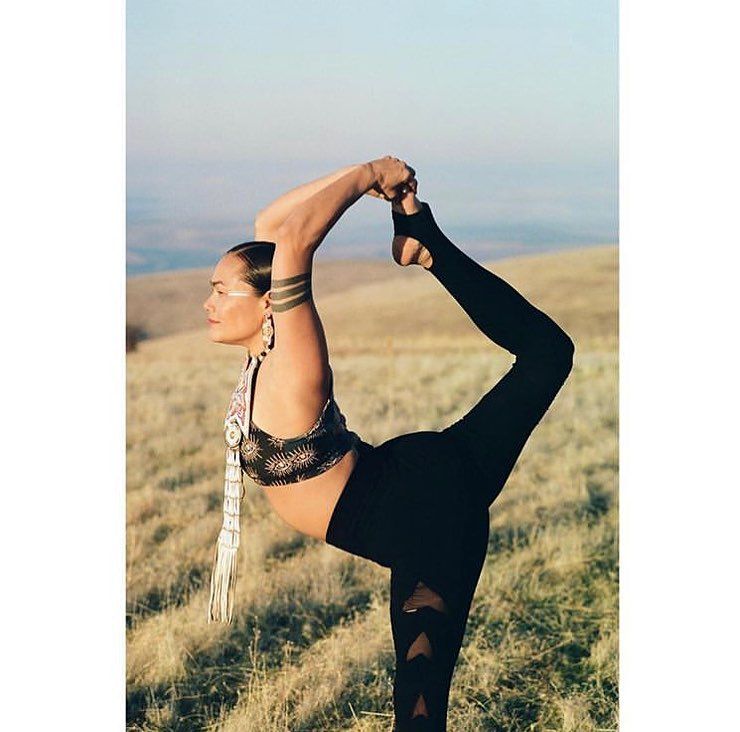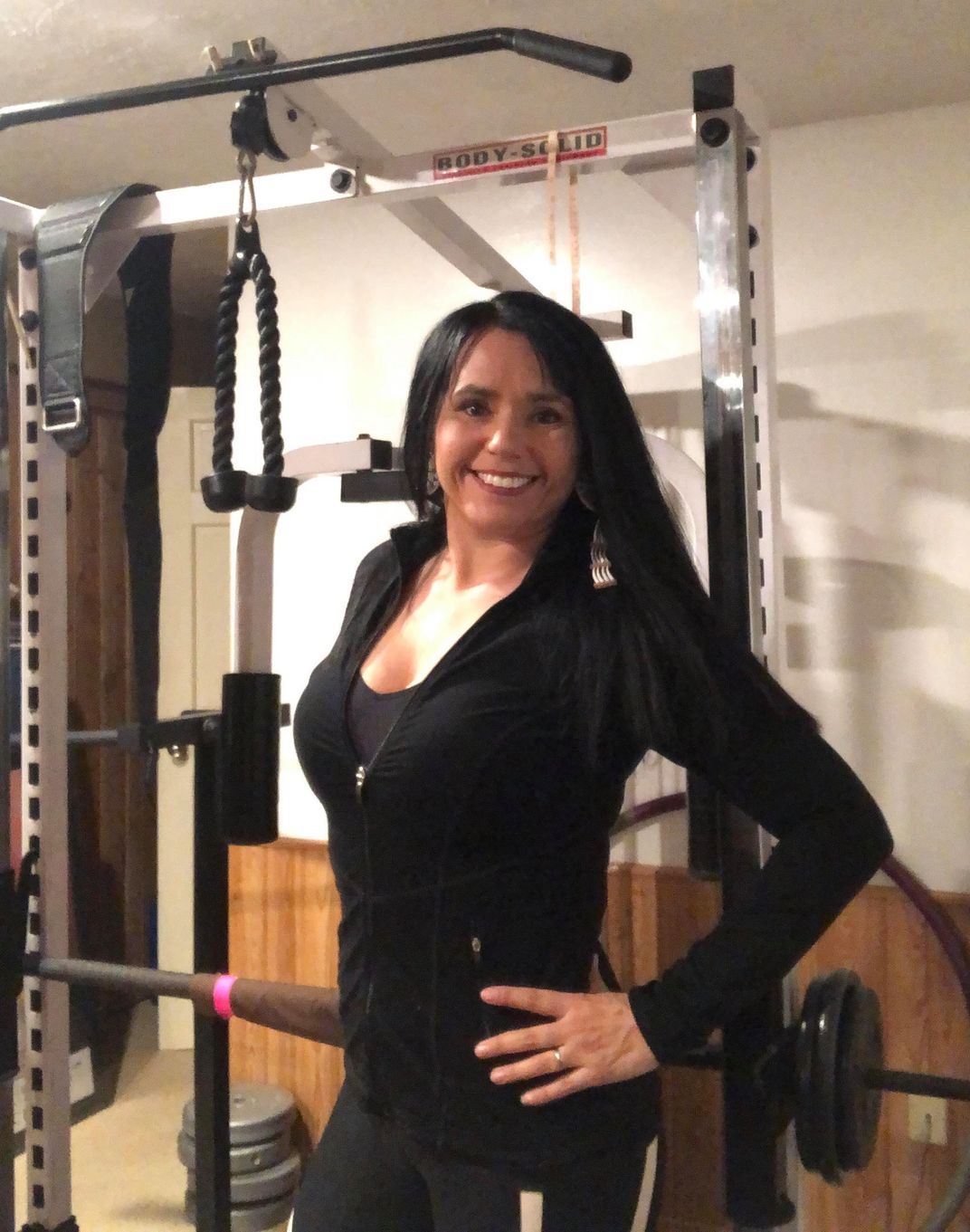NATIONAL MUSEUM OF THE AMERICAN INDIAN
Meet Three Native Women Combining Powwow Dance With Other Types of Fitness
Learn how tribal members are fighting obesity in Indian Country
/https://tf-cmsv2-smithsonianmag-media.s3.amazonaws.com/blogging/featured/Michelle_reed_N8V_dance_fitness.jpg)
The third week in January is recognized as National Healthy Weight Week. In Indian Country, obesity is a current and generational healthcare crisis. According to the American Psychological Association, “Nutrition and weight control have become issues of major concern for a lot of Native American communities in recent years.” According to the Department of Health and Human Services’ Office of Minority Health, American Indian, and Alaska Native adults are 1.6 times more likely to be obese than Caucasians. In addition, almost 33 percent of all American Indians and Alaska Natives are obese. This obesity epidemic is also disproportionately affecting certain groups in the community. Over half of American Indian and Alaska Native women are overweight.
Native people were not always unhealthy. Prior to Contact, Natives had access to healthy foods and exercise was a part of their daily lives. Once contact occurred, Native people were increasingly forced to relocate from their ancestral homelands, where they had acute knowledge of familiar food sources. During the reservation era, Native people were confined to sometimes new and limited geographical locations where they no longer had access to traditional hunting, fishing, gathering, and farming areas. Instead, they were forced to survive on government rations that included food products such as lard, sugar, processed flour, salt, and pork. Transitioning from natural foods to a new diet of processed and unhealthy foods began a cycle of health disparities that were foreign to Native peoples including diabetes, heart disease, hypertension, stroke, and, ultimately, obesity related to weight gain.
Reservation confinement changed natural daily exercise patterns. Plains Indians and other regionally defined tribes, who were culturally nomadic, could no longer travel freely to pursue their ancestral lifeways and foodways. If they left their reservations without authorization, they were considered hostile and could be imprisoned, have their government rations severed, or even be shot. As a result, the daily exercise patterns that had included moving camp, warfare, exploration, food processing, hunting, fishing, and gathering off reservation were eliminated in exchange for a sedentary lifestyle.
Not all Native communities experienced transitions that affected their food and exercise patterns that contribute to unhealthy weight gain. Many agricultural tribes retained their healthy lifestyles because they were allowed to remain in their ancestral homelands and continued to exercise while working in their fields, tending to their livestock and eating healthy by consuming their crops and livestock. In these diets, healthy foods such as fruits, vegetables, and lean meat low in fat could be retained as main food sources.
In the 1950’s the U.S. government instituted a program to assimilate Natives into urban America by providing funding incentives to leave their tribal communities and relocate to select cities.. In response, many Natives relocated from reservations and tribal communities to cities such as Chicago, Cincinnati, Cleveland, Dallas, Denver, Los Angeles, San Francisco, San Jose, and St. Louis. While struggling to adjust to the foreign urban lifestyle, Native people from across Indian Country faced a new poverty that introduced modern disparities in access to healthy foodways and lifestyles.
In the cities, Native people faced discrimination, homelessness, unemployment, and other socio-economic disparities associated with poverty. According to the Pew Research Center, “One in four American Indians and Alaskan Natives are living in poverty.” People living in poverty simply cannot afford the more expensive healthy foods. American Indian households tend to have more family members than the average U.S. households often with multiple generations living under the same roof.
“If you’re going to the store and you have no food, you’re not buying endive, you’re buying for your children the thing that’s going to feed as many children as possible and make them feel full,”
~ Suzan Shown Harjo, President of the Morning Star Institute
Native awareness of poor nutrition and lack of exercise has prompted responses to reduce obesity and unhealthy weight gain across Indian Country. American Indian tribes have developed programs that include nutrition consultation, healthy food distribution programs, meals for tribal members, and exercise facilities. In addition, tribes have partnered with organizations and agencies to provide healthy alternatives to combat health disparities. The Indian Health Service now provides nutrition and exercise programs to federally recognized tribes and their members. The concept of food sovereignty is gaining popularity across Indian Country. Food sovereignty helps restore traditional food systems to promote wellness and healthy living while building relationships with the plants, animals, water, land, and other natural resources that sustain us.
Recently Natives have turned to the internet to provide videos that combine modern exercise techniques such as aerobic workouts and yoga, with Native powwow dance to produce uniquely Native forms of exercise. We have invited three Native facilitators to share their physical wellness videos and information about their exercise programs.
LoVina Louie (Coeur d'Alene/Colville/Nez Perce)

LoVina is a board member for the Native Wellness Institute, a national trainer and facilitator in youth leadership development, strategic planning, family constellations and community healing and wellness planning. She also has certifications from the Healthy Native Communities Fellowship. She has worked with youth and adults in wellness and healing for over twenty years throughout North America. LoVina is the visionary behind the newly developed and revolutionary exercise series Pow Wow Sweat and co-directed the American Indian Film Festival and Red Nation Film Festival award winning music video “We Shall Remain.” As a former Miss Indian World, she travelled to hundreds of tribal communities and this experience expanded her world view and desire to help all Indigenous people.
Acosia Red Elk (Umatilla)

Acosia is a world champion powwow dancer in the jingle dress category and professional craftswoman specializing in original glass objects. In 2014, Acosia discovered Buti Yoga and eventually obtained her certificate to teach. As an avid yoga practitioner and enthusiast, she created a unique style of Powwow Yoga by incorporating traditional yoga with elements from her powwow background. Acosia believes she can help save her people though the practice of Powwow Yoga and practicing healthy lifestyles. Acosia is currently the owner and operator of Pendleton Yoga where, during the current pandemic, she teaches virtual yoga classes throughout the week. Once it is safe to do so, she will resume in-person classes at the Pendleton Yoga studio.
<o:p></o:p>
Michelle Reed (Lac du Flambeau Ojibway)

Michelle is the co-founder of the Woodland Sky Native American Dance Company and a dancer for the #1 selling Native American recording artists, Brulé. She developed N8V Dance Fitness, a workout designed to combine culture, health, and wellness, and has had the opportunity to personally share this with Native communities and universities. N8V Dance Fitness offers free live Facebook classes for all fitness levels weekdays at 5 pm CST, unless something else is scheduled. She is also a clothing and accessories designer, doing custom sewing and beadwork for many champion dancers as well as a full purse line, MReed Designs Purse Co. Her latest project is the Indigenous Girl Doll Collection as well as a line of appliqué face masks. For the past two summers she has been managing the cultural events at the newly renovated Waaswaaganing Living Arts and Culture Center in Lac du Flambeau, WI.
As we celebrate National Healthy Weight Week in the third week of January, I would like to leave you with a personal anecdote to think about. I was invited to Ecuador by the U.S. State Department to teach the Indigenous people of the jungles, coasts, and Andes how to interview and record ancestral knowledge from their elders, using modern technology. At one of our workshops, I asked one village leader if any of his people had diabetes. He said, “No because my people have always relied on PachaMama (Mother Earth) for sustenance. But soon, my village will be getting their first fast food restaurant.” In my mind, Western civilization would soon affect and change the ancient healthy food and exercise habits of his people, just like it changed the healthy habits of the Indigenous people of North America.
